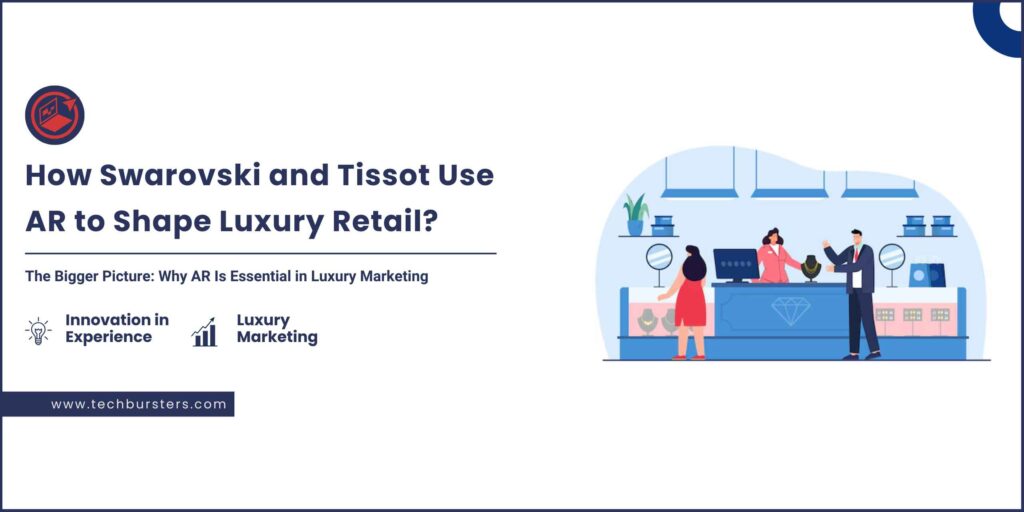
In today’s digitally driven market, luxury brands can no longer rely solely on exclusivity and tradition. With a new generation of tech-savvy consumers expecting immersive and interactive shopping experiences, brands like Swarovski and Tissot are stepping up, embracing Augmented Reality (AR) to transform the way customers explore, try, and buy luxury products.
Let’s take a closer look at how these iconic brands are harnessing AR to bridge the gap between physical beauty and digital innovation.
A New Era of Shopping: The Rise of Augmented Reality
AR is quickly becoming a cornerstone of modern e-commerce, especially in the fashion and accessories industry. It allows customers to virtually “try on” products in real time using their smartphones or in-store displays. This not only eliminates guesswork but also elevates the user experience, making shopping more interactive and personalized.
Swarovski Earrings: Bringing Sparkle to the Virtual World
Swarovski, globally known for its dazzling crystal jewelry, has begun leveraging AR to bring its products to life, quite literally, in the hands of consumers.
Through their virtual try-on technology available on mobile devices and in select boutiques, users can now preview Swarovski earrings on their own ears in real-time. Whether it’s a classic pair of studs or a bold drop design, the technology accounts for movement and lighting, creating an almost mirror-like experience.
Marketing Edge:
This digital feature has not only improved customer confidence in online purchases but also reduced return rates. More importantly, it aligns Swarovski with modern consumer expectations—tech-forward, convenient, and customer-focused.
Additionally, Swarovski often integrates AR into its seasonal campaigns via Instagram filters and branded lenses, allowing users to interact with new collections in fun, shareable ways. It’s a clever blend of product marketing and social engagement.
Tissot: Precision in Time, Innovation in Experience
Meanwhile, Tissot, the renowned Swiss watchmaker, has taken its own leap into AR innovation. Known for blending traditional craftsmanship with cutting-edge tech (think of their T-Touch collection), Tissot is using AR to let customers try on watches virtually from anywhere.
With the Tissot Virtual Watch Try-On available via their website and mobile app, users can place their wrist in view of a camera and choose from various models to see how a timepiece fits their style. The experience is dynamic, offering a 360-degree look at watch faces, straps, and how they sit on your wrist.
Marketing Edge:
Tissot’s AR initiative pairs beautifully with its digital storytelling strategy, offering educational and entertaining content alongside virtual try-ons. By merging utility with experience, Tissot is staying ahead in a fiercely competitive market.
Moreover, AR helps the brand tap into younger consumers who value tech integration just as much as heritage and design.
The Bigger Picture: Why AR Is Essential in Luxury Marketing
Both Swarovski earrings and Tissot watches represent more than just products—they’re symbols of elegance, craftsmanship, and identity. In an era where online retail is booming, AR helps restore the emotional connection often lost in digital shopping.
Luxury is no longer just about price; it’s about experience. AR delivers that experience in a scalable, accessible way, giving these brands the ability to personalize engagement at scale.
Key Benefits of AR in Luxury Retail:
- Higher Conversion Rates: Seeing is believing—virtual try-ons boost buyer confidence.
- Fewer Returns: Shoppers make more informed decisions.
- Increased Engagement: Interactive tools capture attention and promote brand loyalty.
- Social Sharing: AR filters and try-ons encourage user-generated content, amplifying brand reach.
Final Thoughts
As augmented reality continues to reshape retail, brands like Swarovski and Tissot are proving that embracing technology doesn’t dilute luxury—it enhances it.
By investing in AR-driven shopping experiences, they’re not just selling products—they’re telling stories, building trust, and creating meaningful connections with consumers. Whether you’re slipping on a shimmering pair of Swarovski earrings or checking the time on a virtual Tissot, one thing’s clear: the future of luxury is both digital and dazzling.
